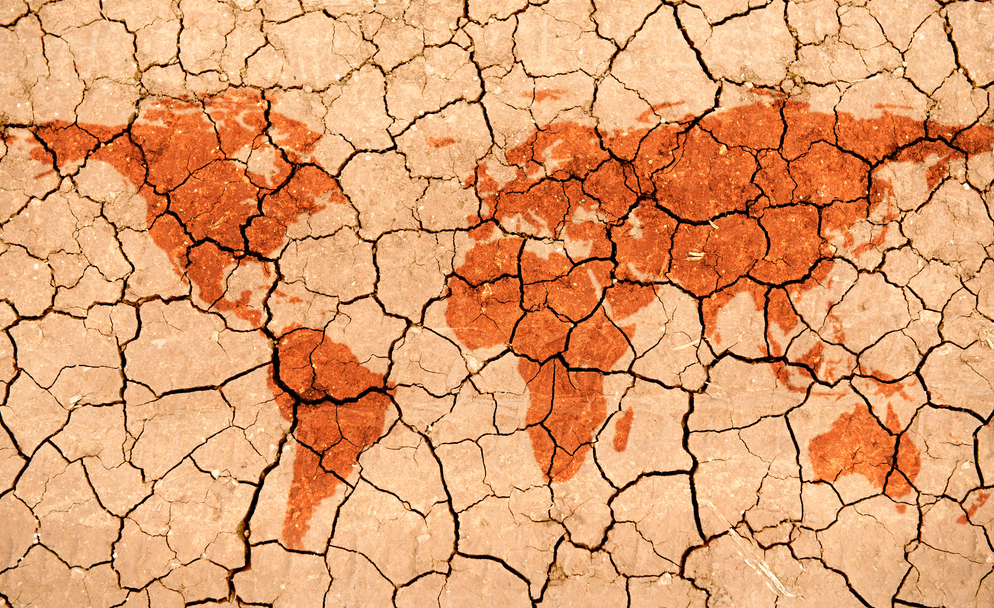
A landmark study in the journal Nature documents an expansion of the world’s dry and semi-arid climate regions since 1950 — and attributes it to human-caused global warming. This expansion of the world’s dry zones is a basic prediction of climate science.
The fact it is so broadly observable now means we must take seriously the current projections of widespread global Dust-Bowlification in the coming decades on our current CO2 emissions pathway — including the U.S.’s own breadbasket.
The new study, “Significant anthropogenic-induced changes of climate classes since 1950,” looks at multiple datasets of monthly temperature and precipitation over time. The main finding:
About 5.7% of the global total land area has shifted toward warmer and drier climate types from 1950–2010, and significant changes include expansion of arid and high-latitude continental climate zones, shrinkage in polar and midlatitude continental climates….
As for the cause, “we find that these changes of climate types since 1950 cannot be explained as natural variations but are driven by anthropogenic factors.”
In short, humans are causing the world’s arid and semi-arid climate zones to expand into the highly populated mid-latitude continental climates (where, for instance, most Americans live) — and causing the high-latitude climates to expand into the polar zones. Of course, the polar zones are precisely where the carbon-rich frozen tundra is and the land-locked ice of the world’s biggest ice sheets and glaciers.
These are stunning changes when you consider the fact that the world has only warmed about 1°F since 1950, and we are on track to warm 5 times that much (or more) this century alone. Multiple climate studies project continued climate inaction will put some one-third of the currently-habited and arable landmass of the planet into a state of near permanent drought post-2050. This new study finds that we are well on our way.
The study uses the Köppen–Geiger climate classification system:
A: Tropical/megathermal climates
B: Dry (arid and semiarid) climates
C: Temperate/mesothermal climates
D: Continental/microthermal climates
E: Polar and alpine climates
This map shows how the world is broken down by climate and sub-climate regime:

Map of the world’s climate regimes. A new study finds the dry zones (B) are expanding while the polar/tundra zones (E) are shrinking. University of Melbourne via Wikipedia.
The study looks at changes in temperature and precipitation to determine changes to the various climate zones over time. A region can shift to a drier B climate zone if precipitation drops — or if temperature rises. Higher temperatures cause more evaporation and dry out soil.
The authors note that of all their results, “the most conspicuous feature is a worldwide expansion of B climate (mainly semiarid) at the expense of C and midlatitude D climate” (see figure below):

Linear trends in areas of 5 major climate types for 1950–2003; asterisks denote significant trends at the 5% level. A positive trend of high-latitude (north of 55°N) D climate and a negative midlatitude (south of 55°N) D climate are over-plotted in blue with the net negative trend of D climate in dark blue
In particular, the researchers found that “rising temperature and decreasing precipitation are about equally important in causing the expansion of semiarid climate in Asia and western North America, while the contribution of decreasing precipitation to the increasing semiarid climate is much larger than that of temperature over North Africa, South Africa and South America.”
The only one way to prevent the irreversible Dust-Bowlification of large parts of the land is to keep total warming as low as possible.